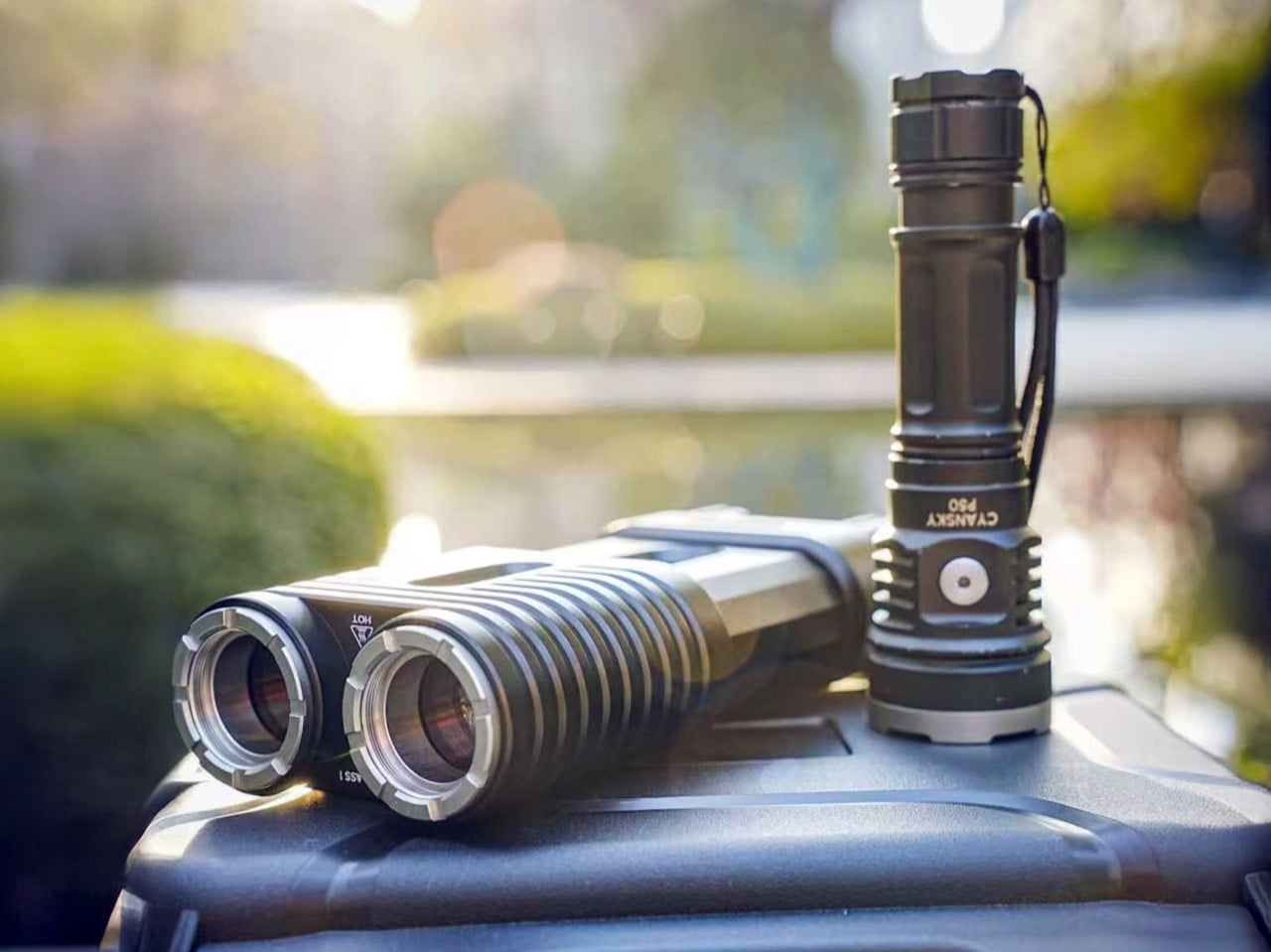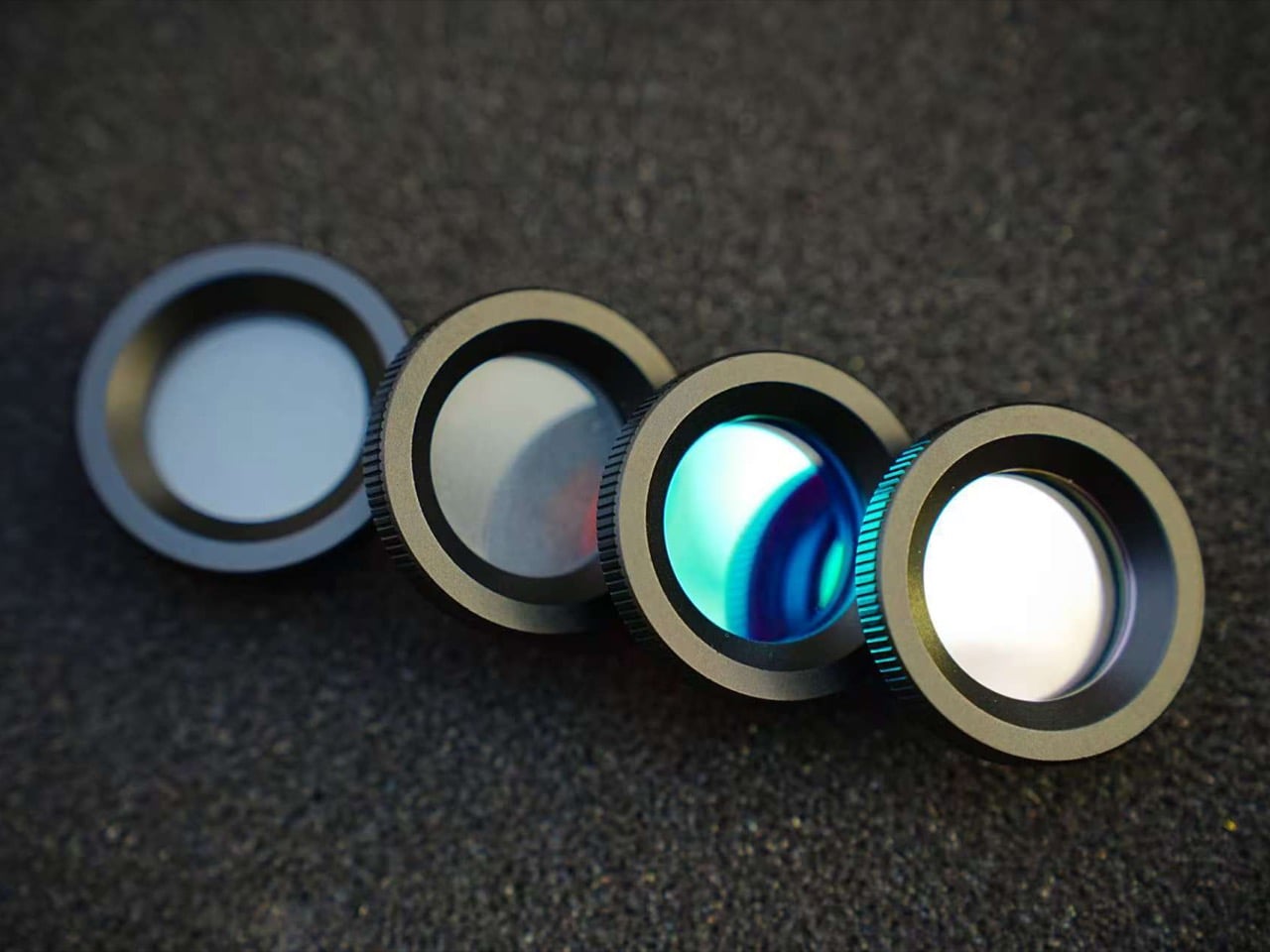This Dual-Barrel EDC Flashlight Has A Beam Distance Of A Whopping 1.2 Miles or 2 Kilometers
The EDC community loves two things: innovation and overkill (in the best possible way). The Lumitwin DL700 delivers both. Imagine a flashlight so powerful it throws light 2 kilometers into the distance. That’s 1.24 miles of beam reach, which is frankly absurd for something you can clip to your bag with a carabiner. This isn’t your grandfather’s Maglite. With dual independently-controlled barrels, laser-excited phosphor modules instead of LEDs, and swappable color filters for different outdoor scenarios, the DL700 reads like a wishlist from r/flashlight brought to life. At 1,032 grams, it’s substantial but purposeful – machined from aerospace aluminum and built to survive everything from torrential rain (IP68 rated) to rough handling.
Every outdoor enthusiast has been there: you’re on a night hike, and your phone’s flashlight dies. Or you’re searching for a trail marker, squinting into the darkness as your standard LED flashlight’s beam dissolves into useless scatter. The Lumitwin DL700 was born from exactly these frustrations – designed by explorers who wanted more than just bright; they wanted far, focused, and adaptable. The DL700 delivers 2,000 meters of throw distance with interchangeable red, green, and flood filters for hunting, search-and-rescue, or tactical situations. Machined from a single aluminum block and rated for 1-meter drops and IP68 waterproofing, it’s the kind of tool you grab when even your purpose-built EDC flashlight won’t cut it.
Designer: Lumitwin
Click Here to Buy Now: $329 $950 (65% off) Hurry! Only 7 days to go.
LEDs have dominated flashlight design for decades, but the Lumitwin DL700 is betting on a different light source entirely. Each barrel houses a Blue Lake NT2 laser-excited phosphor module. This is the same technology that powers high-end automotive laser headlights, where a laser excites a phosphor layer to generate intensely focused light. You’re not shooting laser beams at things (important safety distinction), but you are getting illumination characteristics that conventional LEDs simply cannot match. Traditional LED flashlights scatter their beams, losing intensity rapidly over distance. The DL700’s LEP technology creates a collimated beam that maintains coherence over extreme distances. When both barrels fire simultaneously, you get 1,100 lumens with a combined candela rating of 958,000 cd and that 2,000-meter throw distance. Switch to single-barrel alternating mode and you’re looking at 500 lumens on high with 479,000 cd, which still reaches 1,300 meters.
The dual-barrel setup isn’t just aesthetic mimicry of binoculars, though the form factor does borrow that ergonomic hollow-center grip. Each barrel operates completely independently with its own switch and brightness control. You can run both at full power for maximum illumination, use them separately to extend battery life, or set different configurations on each barrel for specific tasks. Thread-on filters for each barrel include red, green, and light-diffusing flood options. Red light preserves night vision for hunting or astronomy. Green cuts through fog and provides better contrast in dense vegetation. The flood filter transforms the focused laser beam into wider area illumination for close-up camp work or search and rescue scenarios where you need to illuminate a broader field. This modular approach gives you essentially six different flashlights in one package, and you can mix configurations. One barrel with red filter for navigation, one with standard white laser for distance spotting.
Each barrel gets its own 6,000mAh 21700 lithium-ion cell, totaling 12,000mAh across the entire unit. This explains why the alternating single-barrel mode delivers such impressive runtime. On high output with alternating barrels, you get eight hours. Drop to low output and you’re looking at 16 hours of continuous operation. Both barrels simultaneously at maximum output drain things faster at four hours on high, but that’s still respectable given the performance output. USB-C charging on both batteries means you’re not hunting for proprietary cables or dealing with annoying charging cradles.
Each unit is machined from a solid block of 6061 aerospace aluminum (the same alloy used in aircraft components and high-end bike frames) which explains both the premium feel and the 1,032-gram weight. IP68 waterproofing means submersion to 1.5 meters for 30 minutes, which translates to “drop it in a river and you’re fine.” The specs list 10-meter drop resistance, which is more than you can claim for most smartphones. The body includes integrated cooling fins and an intelligent temperature control system to maintain stable brightness without thermal throttling, which is crucial for sustained high-output use.
Dimensions come in at 7.2 inches long, 3.15 inches wide, and 1.57 inches tall. This puts it firmly in the “substantial EDC” category rather than pocket-friendly territory. You’re carrying this on a belt loop, in a bag, or via the included braided wrist strap and carabiner setup. The included hard-shell case keeps everything organized and protected during transport. For context on use cases, this level of performance targets search and rescue operations, serious hunting and expedition work, tactical applications, and outdoor enthusiasts who need reliable long-distance illumination. You’re not using this to find your keys in the dark. You’re using this to spot trail markers from a mountain ridge or illuminate a distant shoreline during night navigation.
Double the barrels but halve the price is what I imagine the folks at Lumitwin said when they launched their Kickstarter. The MSRP on the DL700 starts at an eye-watering $950, but a whopping 65% discount brings its price down to $329 for a limited time while the project accrues backers on Kickstarter. For that price you get an entire hard-shell case with the flashlight itself, two 6000mAh batteries, two floodlight filters, a red light filter, a green light filter, two replacement silicone buttons, a braided cord and carabiner for easy carrying, and finally 4 waterproof rings. The DL700 begins shipping globally starting December this year, so grab yours now and you should get it in time for Christmas, or maybe your holiday camping trip as the new year rolls in.
Click Here to Buy Now: $329 $950 (65% off) Hurry! Only 7 days to go.
The post This Dual-Barrel EDC Flashlight Has A Beam Distance Of A Whopping 1.2 Miles or 2 Kilometers first appeared on Yanko Design.
Forget the e-tron GT; This Is the Electric Audi We Really Want To See

What happens when one of Germany’s most storied automakers goes off script and jumps headlong into the future? The answer is the Audi 20quattro Vision GT: a concept racer that looks as if it’s escaped from a sci-fi film and landed straight into the world of Gran Turismo. More than just a design study, it’s a bold experiment that explores how Audi’s DNA translates into a world where the only limits are those of imagination.
Now, before you start searching for this in the latest Gran Turismo update, it’s crucial to know that this isn’t an official release from Ingolstadt. This stunning piece of digital sculpture is the work of independent designer Gabriel Naretto, a personal project that serves as a powerful “what if” scenario. He’s taken the core tenets of Audi’s design philosophy and motorsport heritage, plugged them into an amplifier, and cranked the volume to eleven. The result is something that feels authentically Audi, yet completely untethered from the constraints of reality, a digital ghost of a race car we all wish was real.
Designer: Gabriel Naretto


The car’s form language is an exercise in geometric aggression, a clear evolution of the sharp, technical lines championed by Audi’s current design chief, Marc Lichte. Naretto has stripped away any hint of superfluous curvature, leaving behind a surface composed of taut, flat planes and brutally sharp creases that look like they were carved from a single block of metal. Its low, impossibly wide stance and cab-forward canopy are direct descendants of modern Le Mans prototypes, particularly Audi’s own R18 e-tron. This machine is designed to look like it’s slicing through the air even when standing still, a pure expression of aerodynamic intent.

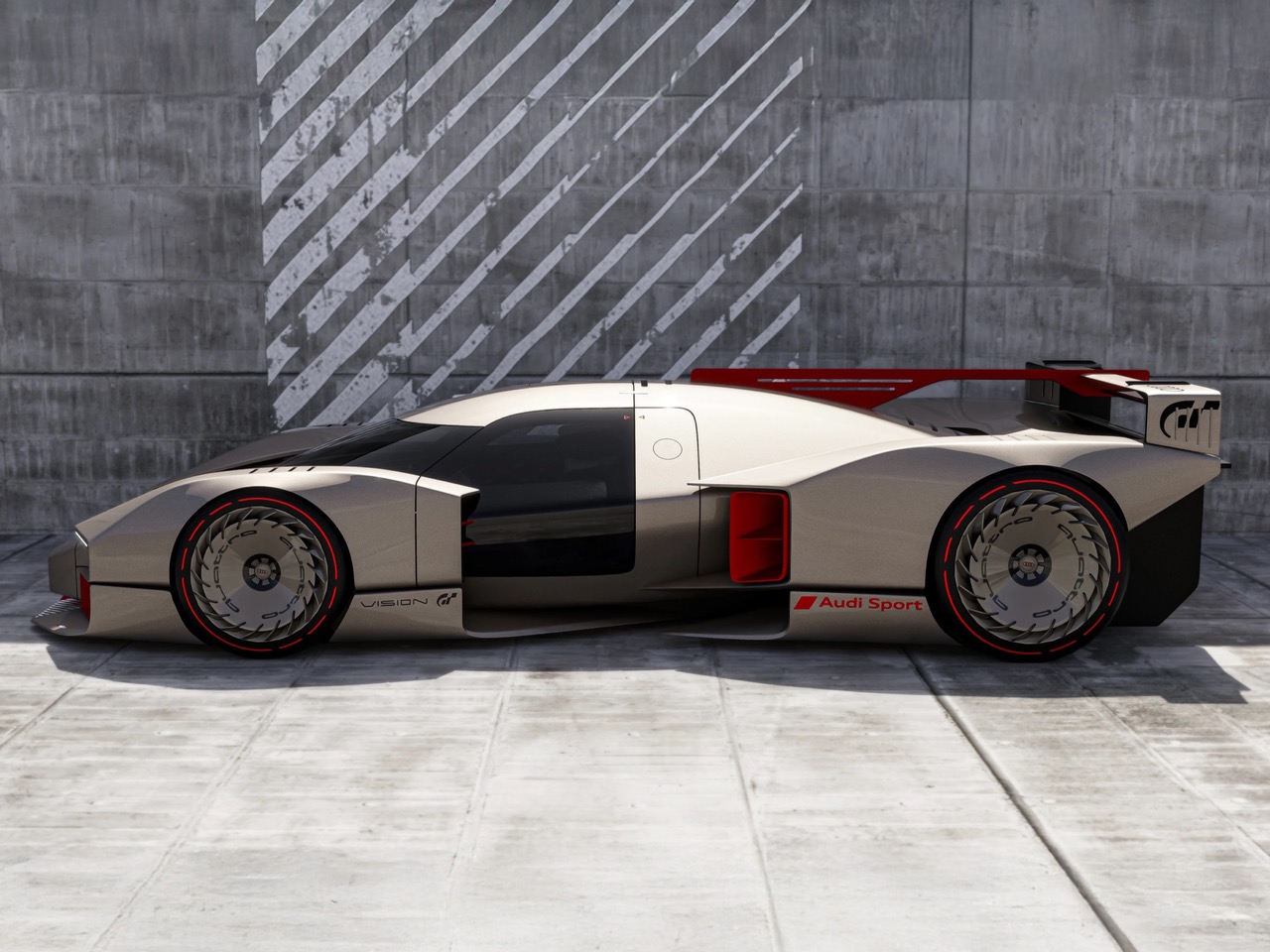
Naretto clearly spent as much time thinking about airflow as he did about aesthetics. The entire body is a functional aerodynamic device, from the massive front splitter that channels air under the car to the multi-layered rear wing and colossal rear diffuser. The deep venturi tunnels running along the sides are designed to generate immense downforce, effectively sucking the car onto the pavement at speed. Even the enclosed wheel designs, with their turbine-like fins, suggest a meticulous focus on managing turbulent air and cooling the brakes. Every vent, every winglet, every cutout serves a purpose, giving the design a layer of engineering credibility that makes the fantasy feel plausible.


That “quattro” badge on the rear isn’t just for show, either. The entire concept is a hat tip to Audi’s most mythic era: the Group B rally monsters of the 1980s. You can see the DNA of the original Sport Quattro S1 E2 in the squared-off, box-flare wheel arches and the car’s overall defiant posture. Naretto has masterfully translated that iconic, almost brutish functionality into a futuristic context. It evokes a feeling of raw, untamed power, a reminder that before Audi became known for sophisticated luxury sedans, it built all-wheel-drive terrors that dominated the world’s most dangerous rally stages.

This is where the “Vision Gran Turismo” moniker becomes so fitting, even unofficially. Digital platforms are the perfect canvas for such an uncompromising vision, free from the pesky realities of production costs, safety regulations, and pedestrian impact standards. One can only speculate on the powertrain, but a concept this forward-thinking screams all-electric. Imagine a quad-motor setup, one for each wheel, delivering instantaneous torque vectoring and a combined output somewhere north of 1,200 horsepower. In the virtual world, such figures are not just possible; they are expected, and Naretto’s design provides the perfect shell for that kind of imaginary performance.


Of course, a machine that looks this fast needs some theoretical firepower to back it up. While Naretto hasn’t published a spec sheet, one can imagine a fully electric powertrain in line with Audi’s e-tron direction. A quad-motor setup, one for each wheel, would be the only logical choice for a vehicle bearing the quattro name in the 2040s. We could be talking about a combined output of over 1,400 horsepower and an instantaneous torque vectoring system so advanced it would make current systems feel archaic. Not that such specs exist, but why stop dreaming, right?

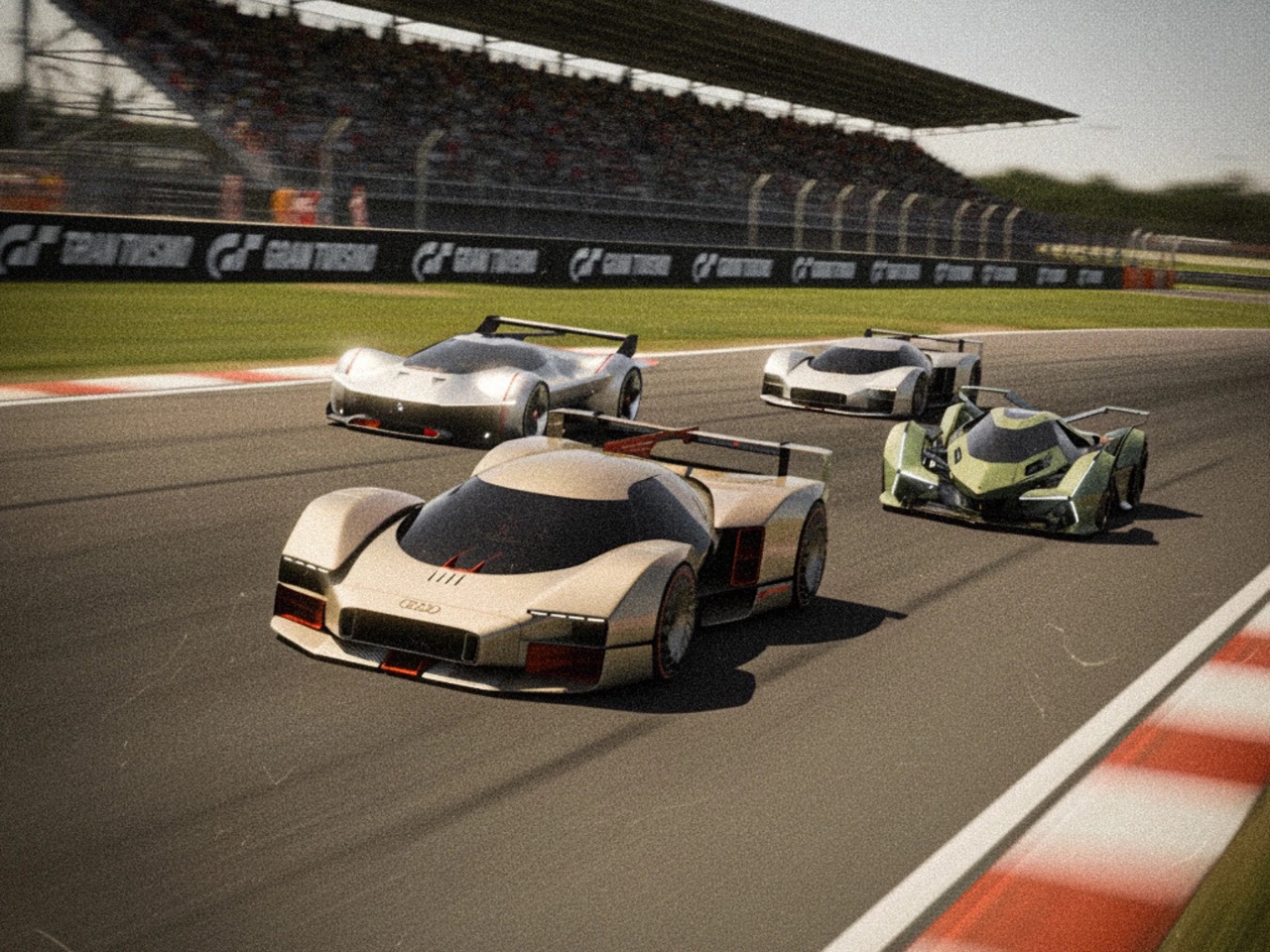
The post Forget the e-tron GT; This Is the Electric Audi We Really Want To See first appeared on Yanko Design.
A Floating $395M Opera House Inspired By Oyster Pearls Opens In 2027

Construction has kicked off on what might be Southeast Asia’s most jaw-dropping cultural project—the Isola della Musica, a striking opera house designed by the legendary Renzo Piano that will literally float on Hanoi’s West Lake when it opens in 2027. You’d be hard-pressed to find a more dramatic setting for world-class performances.
The name means “Island of Music” in Italian, which feels fitting given Piano’s heritage and the venue’s extraordinary location on the Quang An Peninsula, nestled between West Lake and the newly created Đầm Trị Lake. At $394.5 million, this isn’t just about building another concert hall—it’s Vietnam flexing its cultural muscles on the global stage.
Designer: Renzo Piano Building Workshop and PTW Architects


A Pearl Born from History
Piano’s vision reaches deep into the lake’s past for inspiration. Generations of local farmers once made their living diving for massive freshwater oysters called “Trai,” hunting for those rare pearls that shimmer in pink, orange, and white. The opera house captures that heritage perfectly, its gleaming dome emerging from the water like nature’s own masterpiece, finally surfacing.
The architectural genius here lies in how Piano expresses what happens inside through the building’s outer shell. His team played with everything from soap bubble formations to catenary curves, crafting a double-layered structure that feels alive and organic. The building seems to breathe alongside the lake’s natural rhythms while maintaining the structural sophistication you’d expect from a Piano masterpiece.


Beyond the Stage
This 191,000-square-meter complex packs a serious punch with its 2,000-seat main theater, plus additional performance spaces that bump total capacity past 3,200. But calling it just an opera house sells it short—the venue will house museums, event spaces, and programming that goes way beyond traditional classical fare.
The real brilliance shows in how seamlessly it weaves into Hanoi’s fabric. The surrounding waterways, including the historic lotus pond at Pho Linh Pagoda and Thuy Su Lake, are getting full restoration treatment with native lotus replanting. Eight new boat docks will create water-based transit routes, including direct aquatic access to performances—imagine arriving at the opera by boat as the sun sets over West Lake.
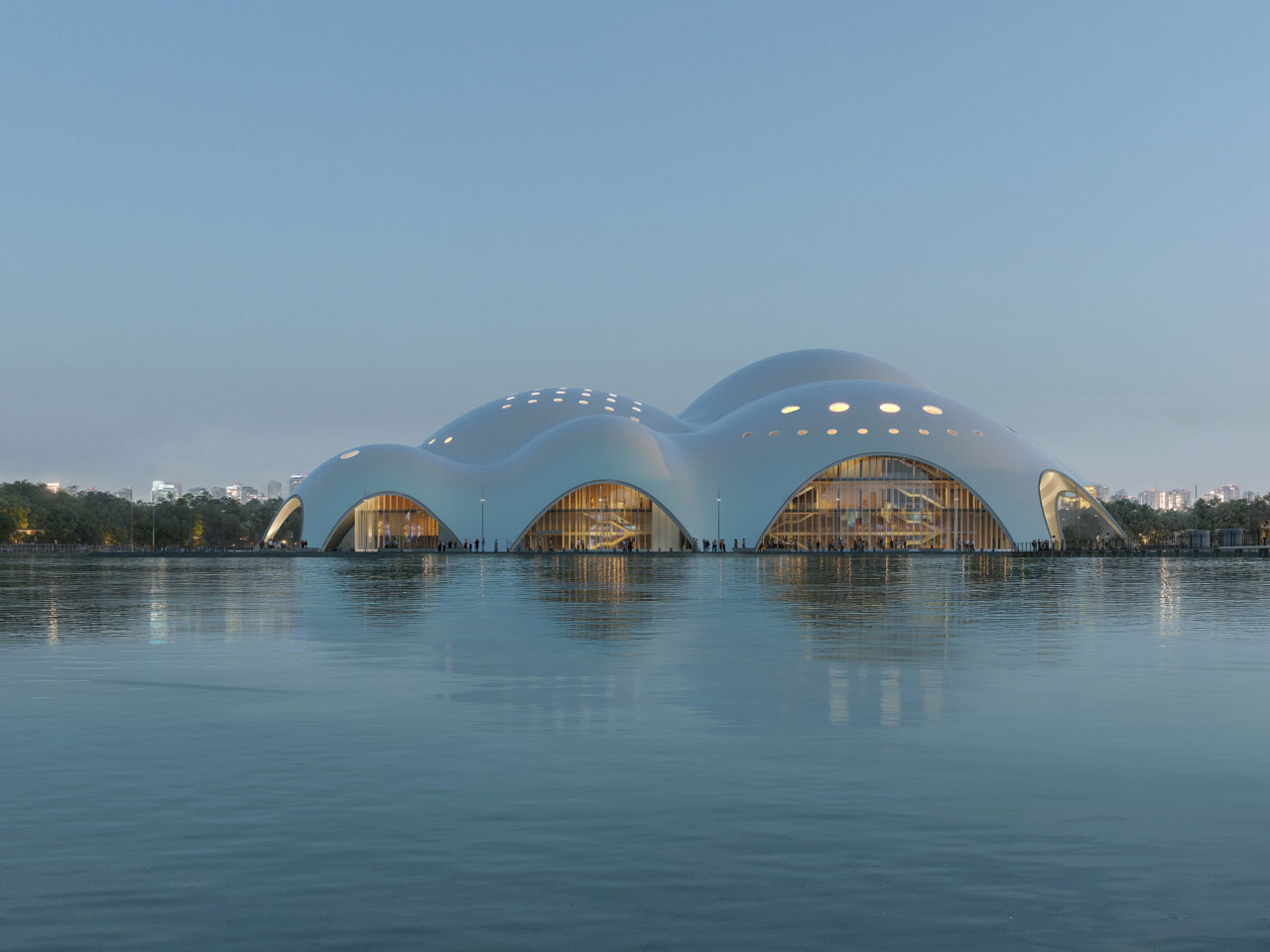
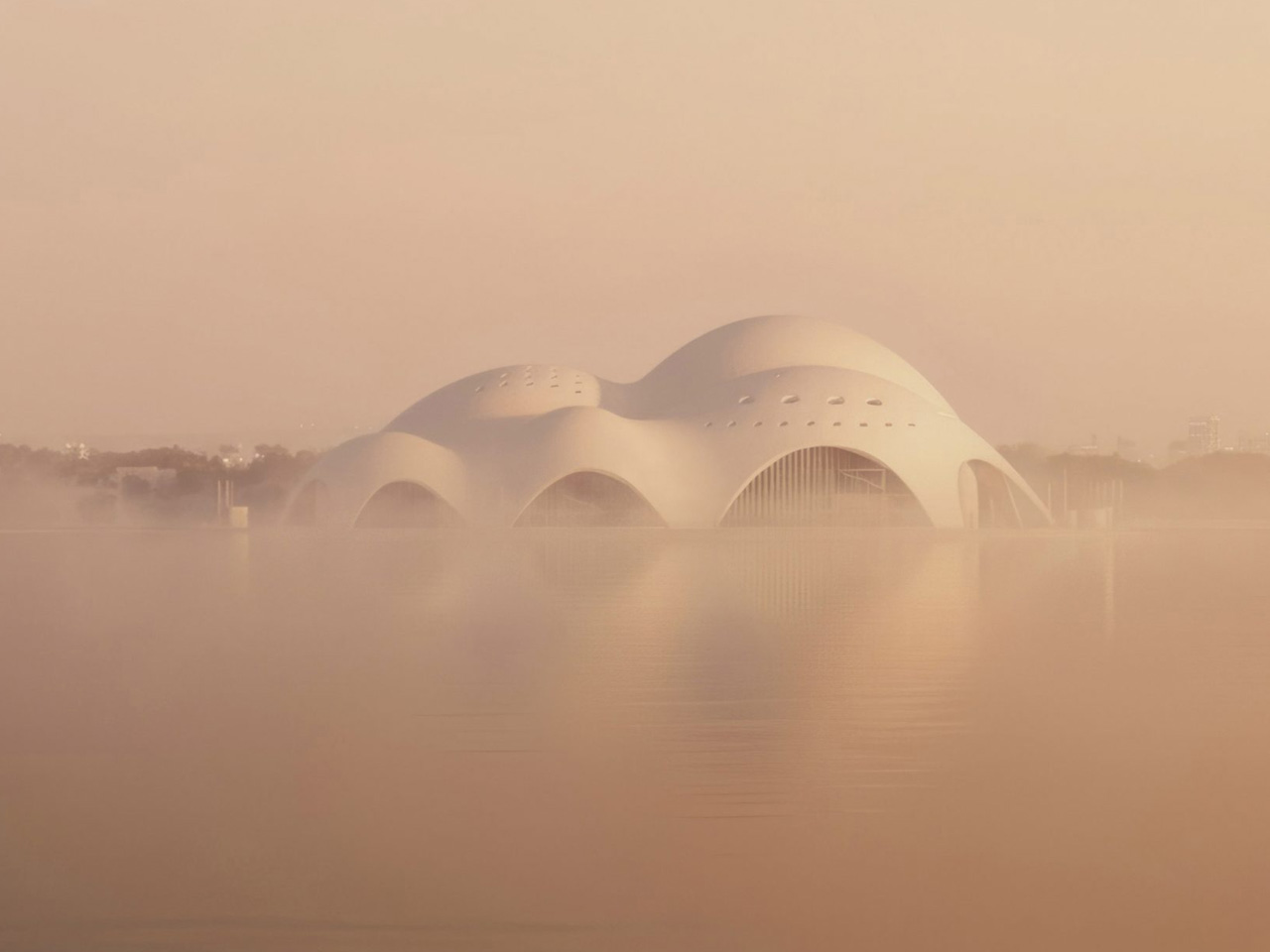
A Cultural Capstone
The partnership between Piano’s workshop and Sydney’s PTW Architects brings world-class expertise to Vietnam’s cultural evolution. At 87, with 65 years of architectural mastery behind him, Piano could have chosen any project. Instead, he picked this Hanoi landmark as his latest legacy piece, seeing it as something truly special.
When the Isola della Musica finally opens in 2027, it’ll offer far more than spectacular performances. This floating pearl represents Vietnam’s cultural transformation, Piano’s enduring genius, and proof that great architecture can reshape both cityscapes and entire societies. Hanoi already has its gorgeous French colonial opera house—now it’s getting a contemporary cultural crown jewel that can stand toe-to-toe with the world’s greatest venues.
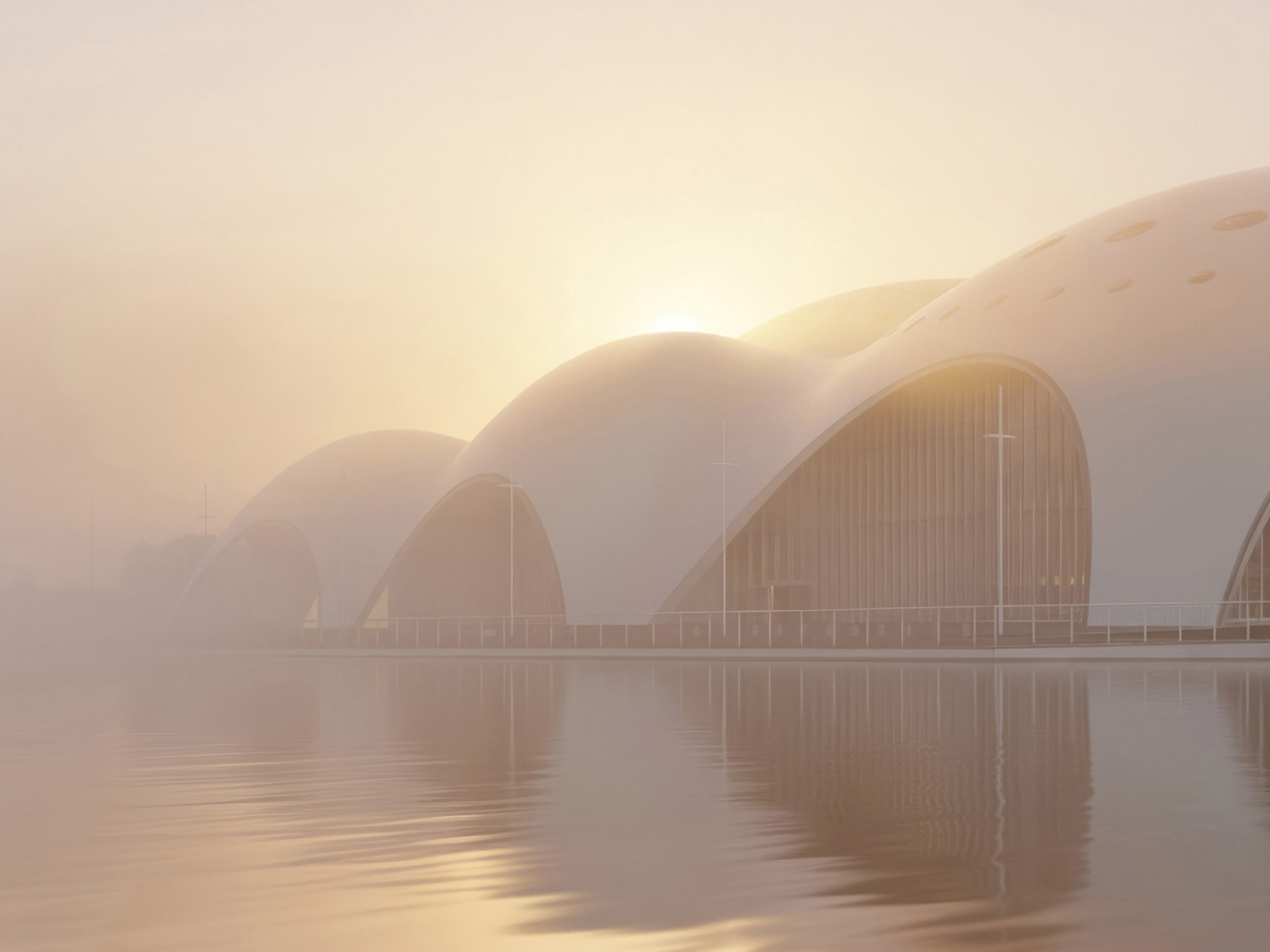
The post A Floating $395M Opera House Inspired By Oyster Pearls Opens In 2027 first appeared on Yanko Design.
This AI Music Sketchbook Captures Ideas Before They Disappear
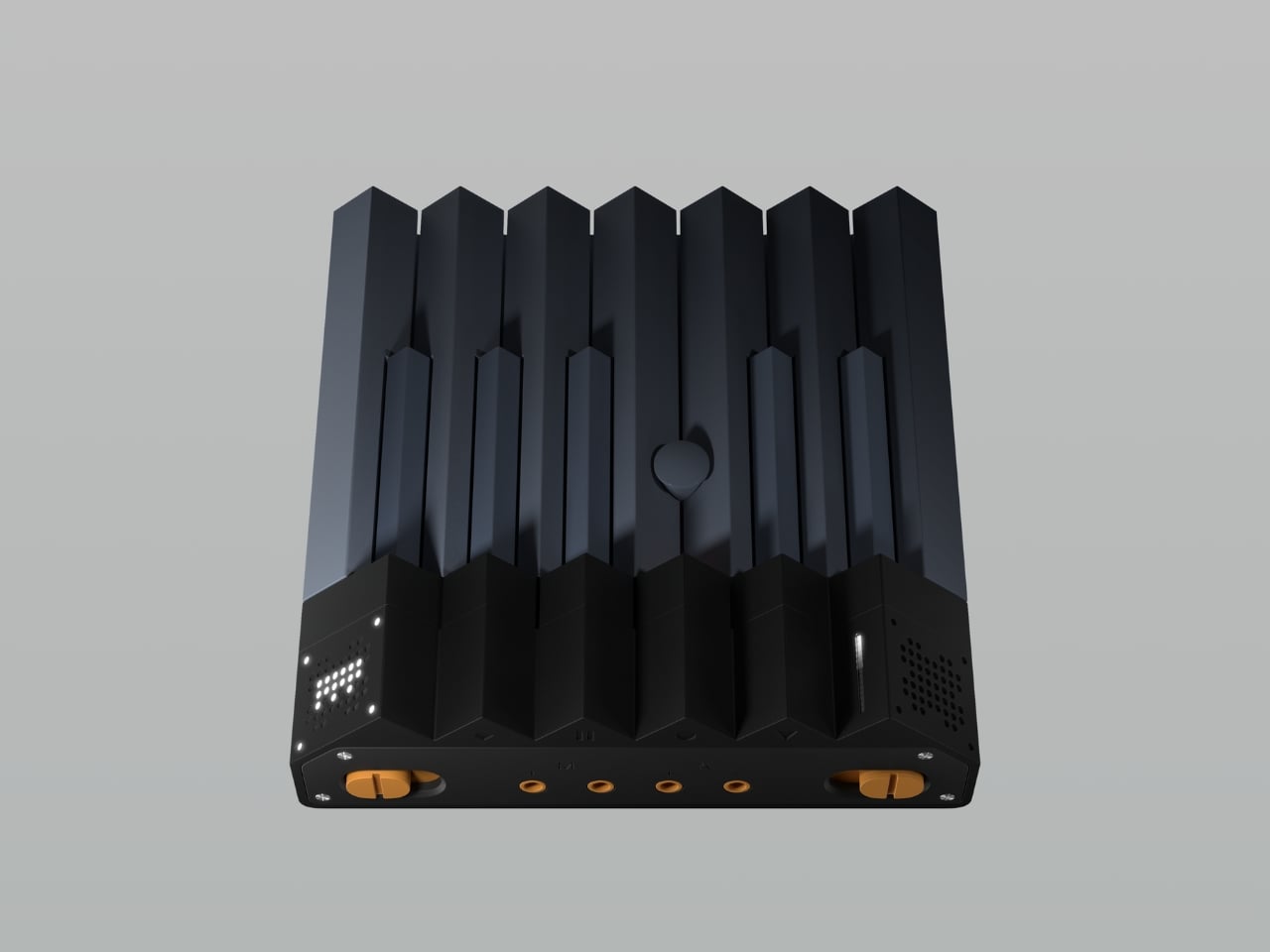
You know that feeling when a melody pops into your head while you’re walking down the street, but by the time you pull out your phone to record it, the magic’s already gone? Or when you’re hit with a musical idea but don’t have the technical skills to translate it into something real? That frustrating gap between inspiration and creation is exactly what designer Woojin Jang is trying to bridge with their concept project, Everglow.
Think of it as a sketchbook, but for sound. Just like artists carry notebooks to capture visual ideas before they fade, Everglow is designed to help musicians and creators capture sonic inspiration in real time. The concept combines a physical hardware interface with generative AI technology, creating something that feels both wonderfully tactile and futuristic at the same time.
Designer: Woojin Jang
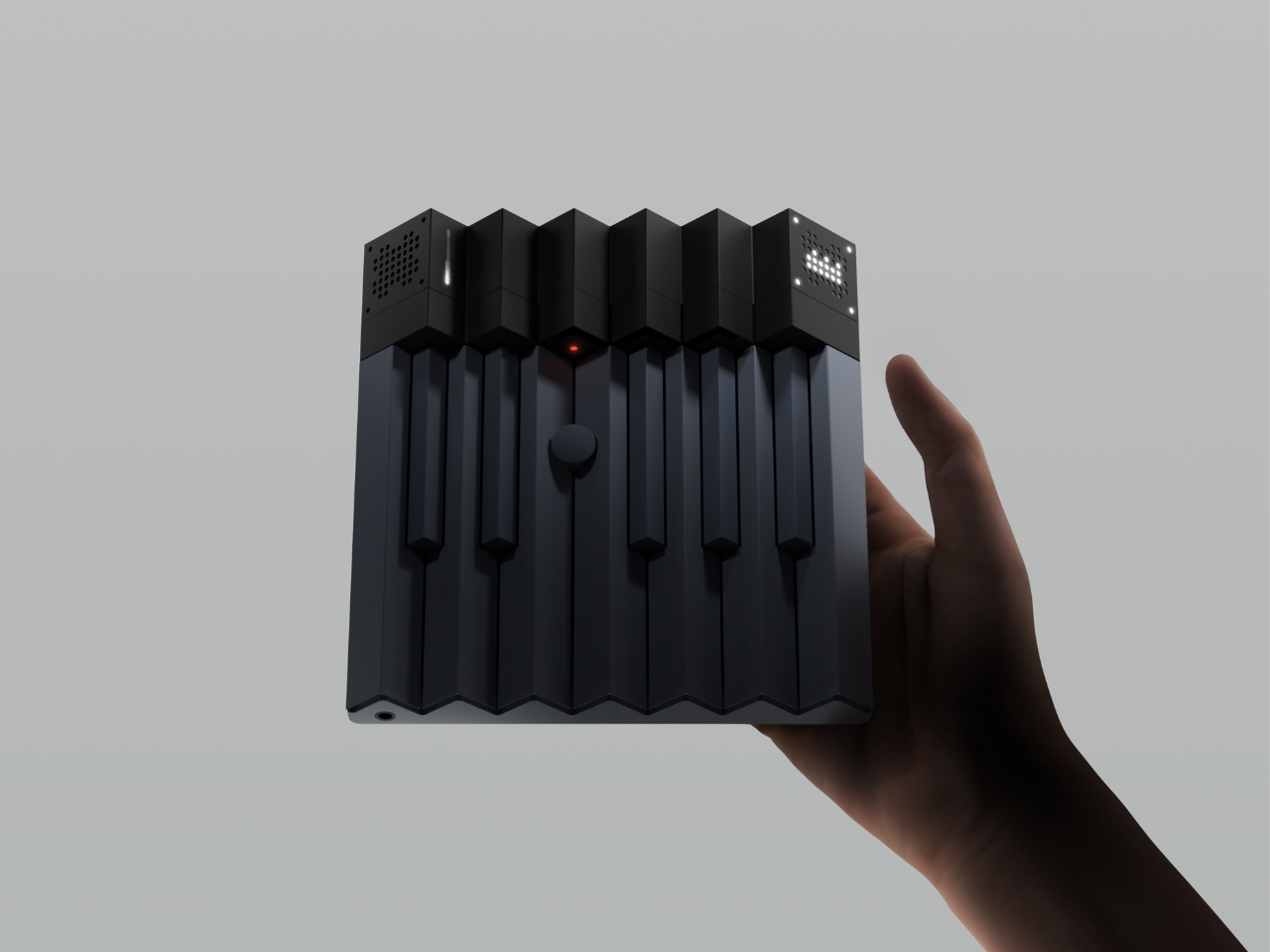
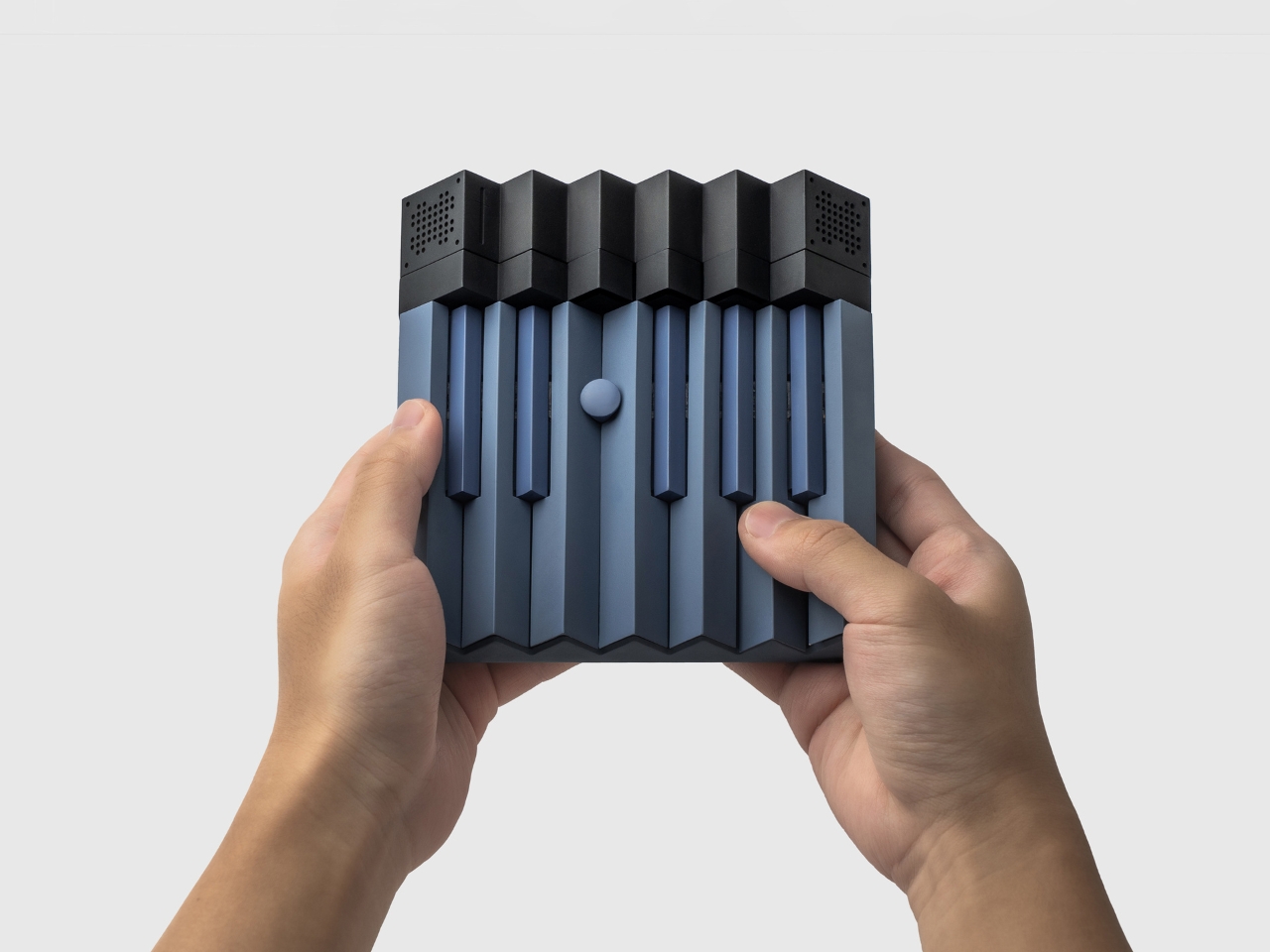
What makes this particularly interesting is how it rethinks the relationship between humans and music-making tools. Traditional instruments require years of practice, and digital audio workstations can feel overwhelming with their endless menus and options. Everglow sits somewhere in between (hence the design name “InBetween”), offering immediate access to sound creation without the steep learning curve.
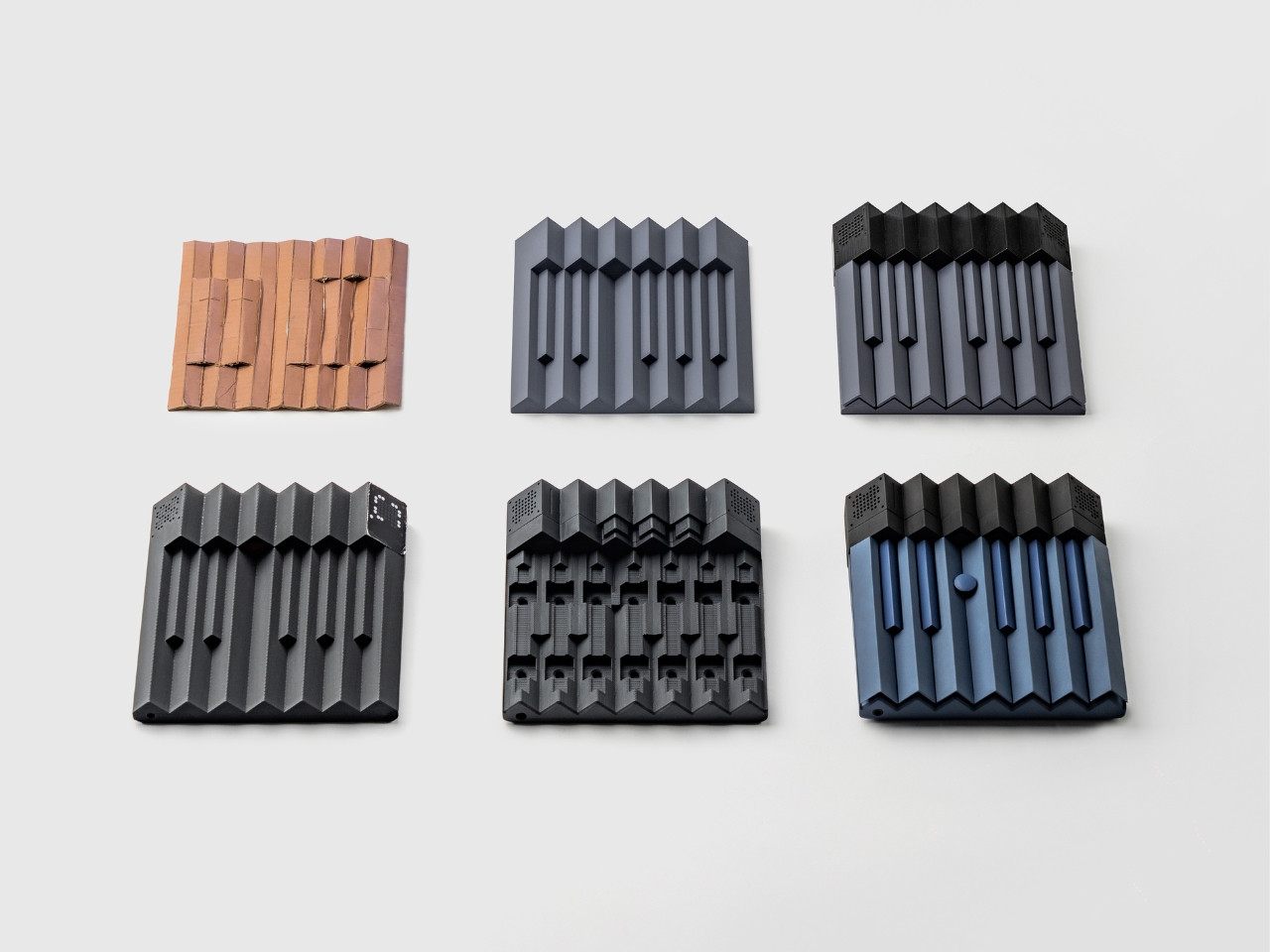

The hardware interface is key here. Instead of clicking around on a screen or fumbling with software, you’d interact with physical controls that respond to your touch and gestures. This tactile element matters more than you might think. There’s something about physically manipulating sound that connects you to the creative process in a way that mousing around never quite achieves. It’s the difference between typing a description of a drawing and actually sketching it with your hands.


But the real innovation happens when you pair that physical expressiveness with AI-generated sound. The generative system doesn’t just play preset sounds or samples. Instead, it responds to your input by creating and shaping audio in real time, almost like having a collaborative partner who instantly understands where you’re trying to go musically. You guide it with your gestures and adjustments, and it fills in the gaps, suggesting possibilities you might not have considered. This approach democratizes music creation in a fascinating way. You don’t need to know music theory or have mastered an instrument to explore sonic ideas. The concept suggests a world where musical literacy isn’t a prerequisite for musical expression, where the barrier between “I hear something in my head” and “here’s what it sounds like” becomes paper-thin.

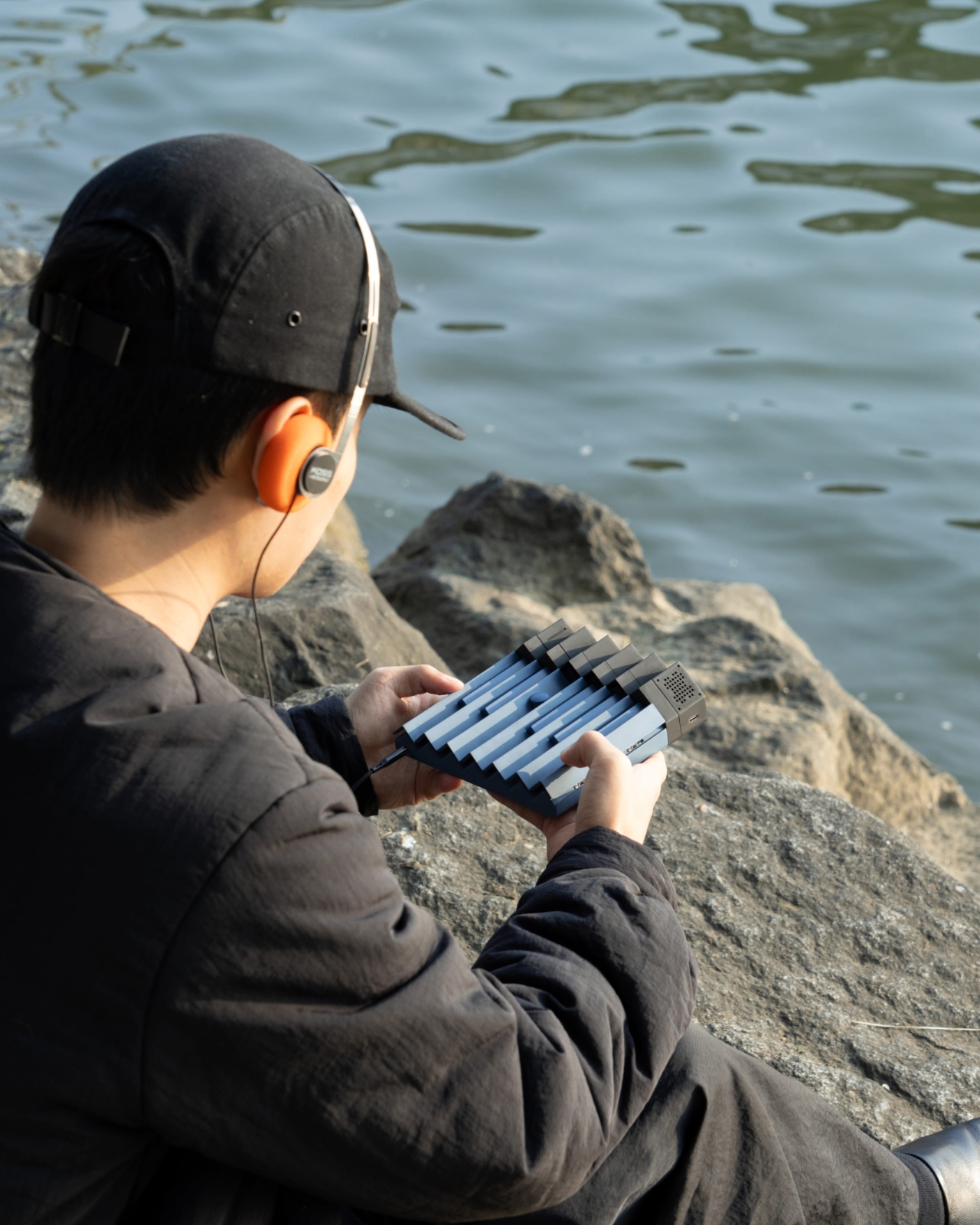
Of course, as a concept, Everglow exists in that exciting space where possibility meets imagination. We’re not looking at a finished product you can buy tomorrow, but rather a vision of what music-making tools could become. That’s what makes design concepts so valuable. They push our thinking forward, challenge assumptions about how things should work, and inspire both creators and technologists to pursue new directions.
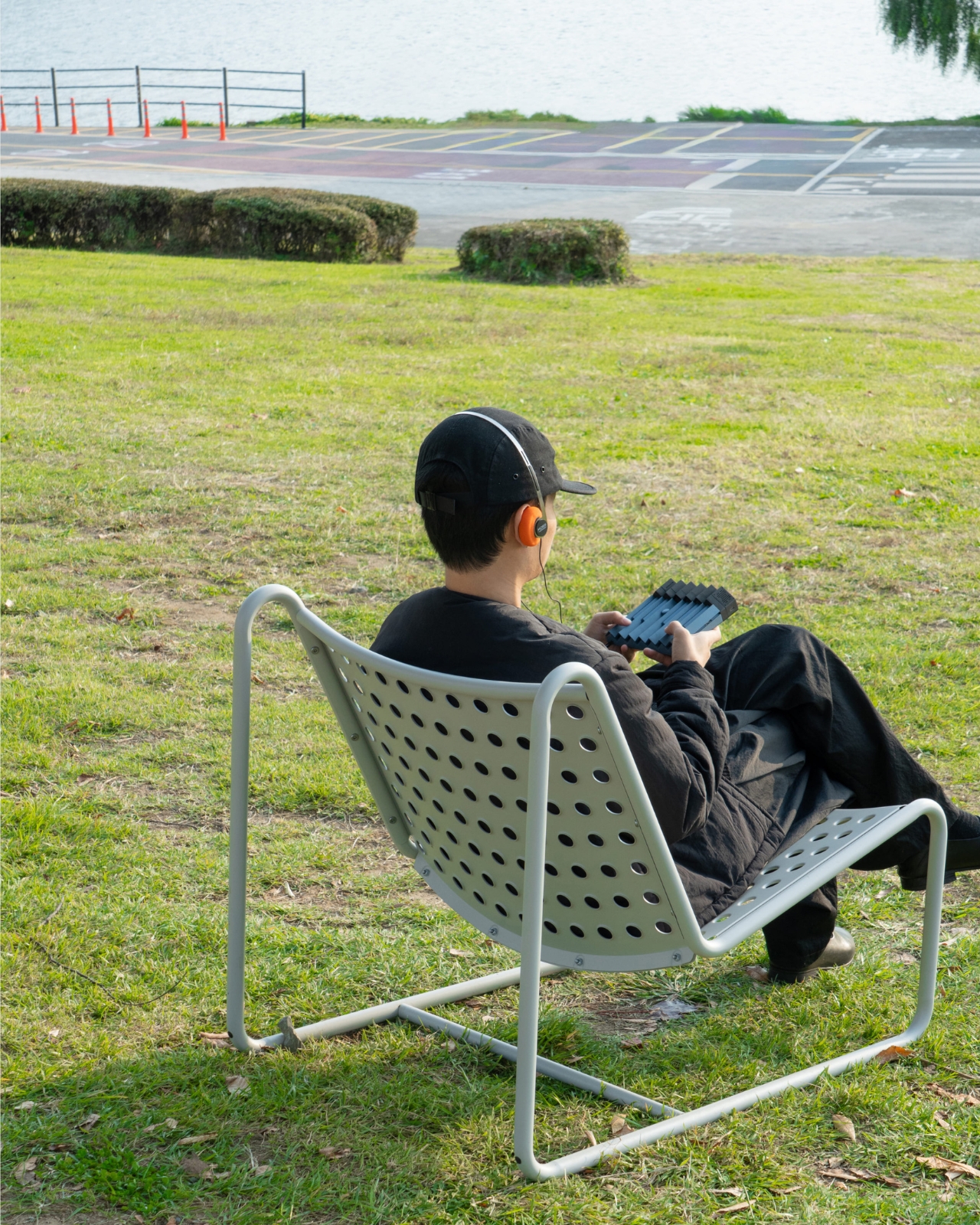

The timing feels right, too. We’re living in an era where AI is rapidly transforming creative tools, from image generation to writing assistance. Music has been part of this evolution, but often in ways that feel disconnected from the physical, intuitive experience of making sound. Everglow suggests a different path, one where AI enhances rather than replaces the human touch, where technology becomes invisible enough that you can focus on the creative flow rather than the technical obstacles.

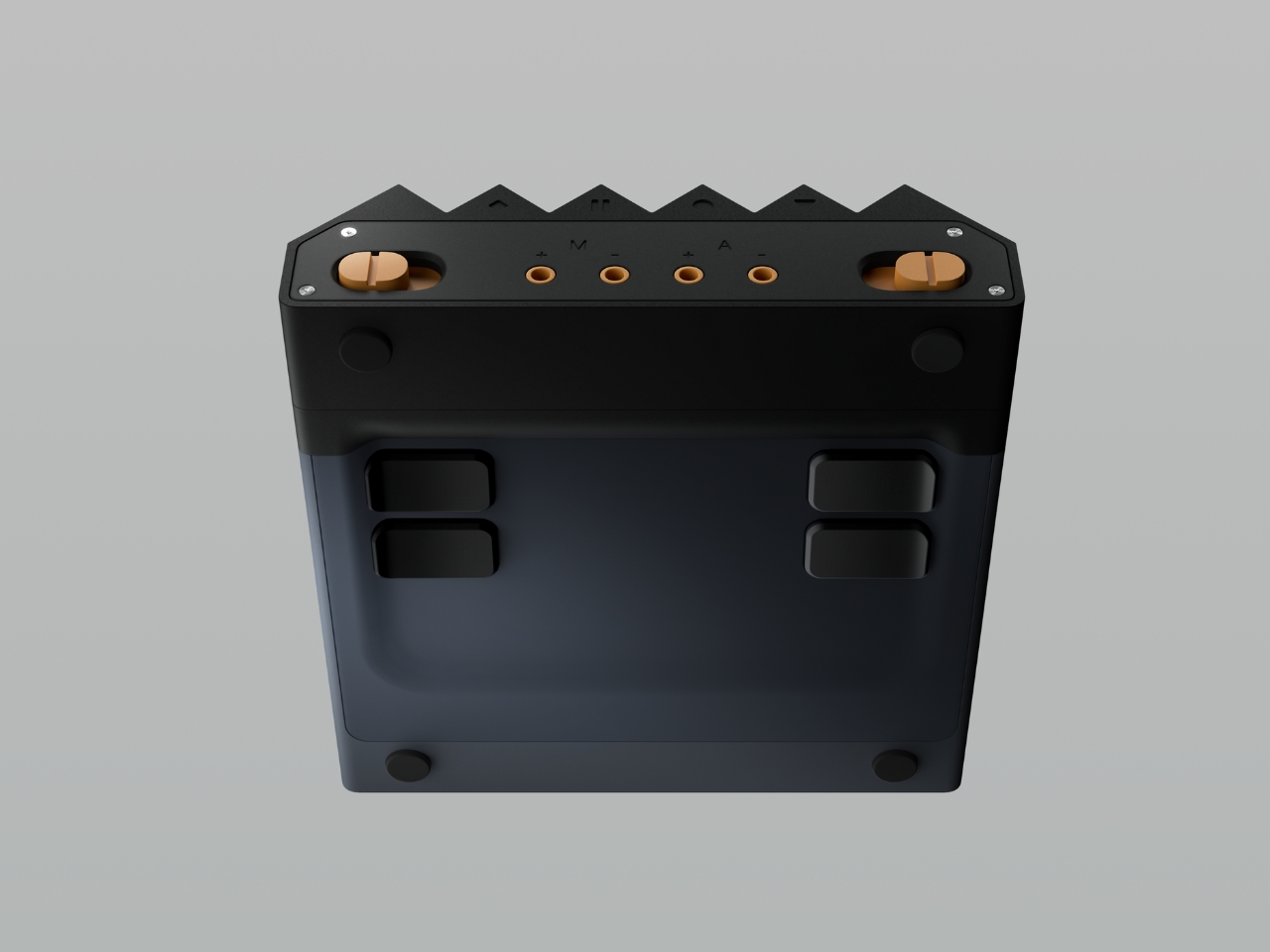
Whether or not Everglow itself becomes a reality, the questions it raises are worth sitting with. How do we design tools that capture the fleeting nature of inspiration? What’s the right balance between human control and AI assistance in creative work? And how can we make music creation feel as natural and immediate as doodling in a notebook? For anyone who’s ever had a musical idea slip away before they could catch it, concepts like this offer a glimpse of a more intuitive future. One where the tools get out of the way, and the space between imagination and creation becomes just a little bit smaller.
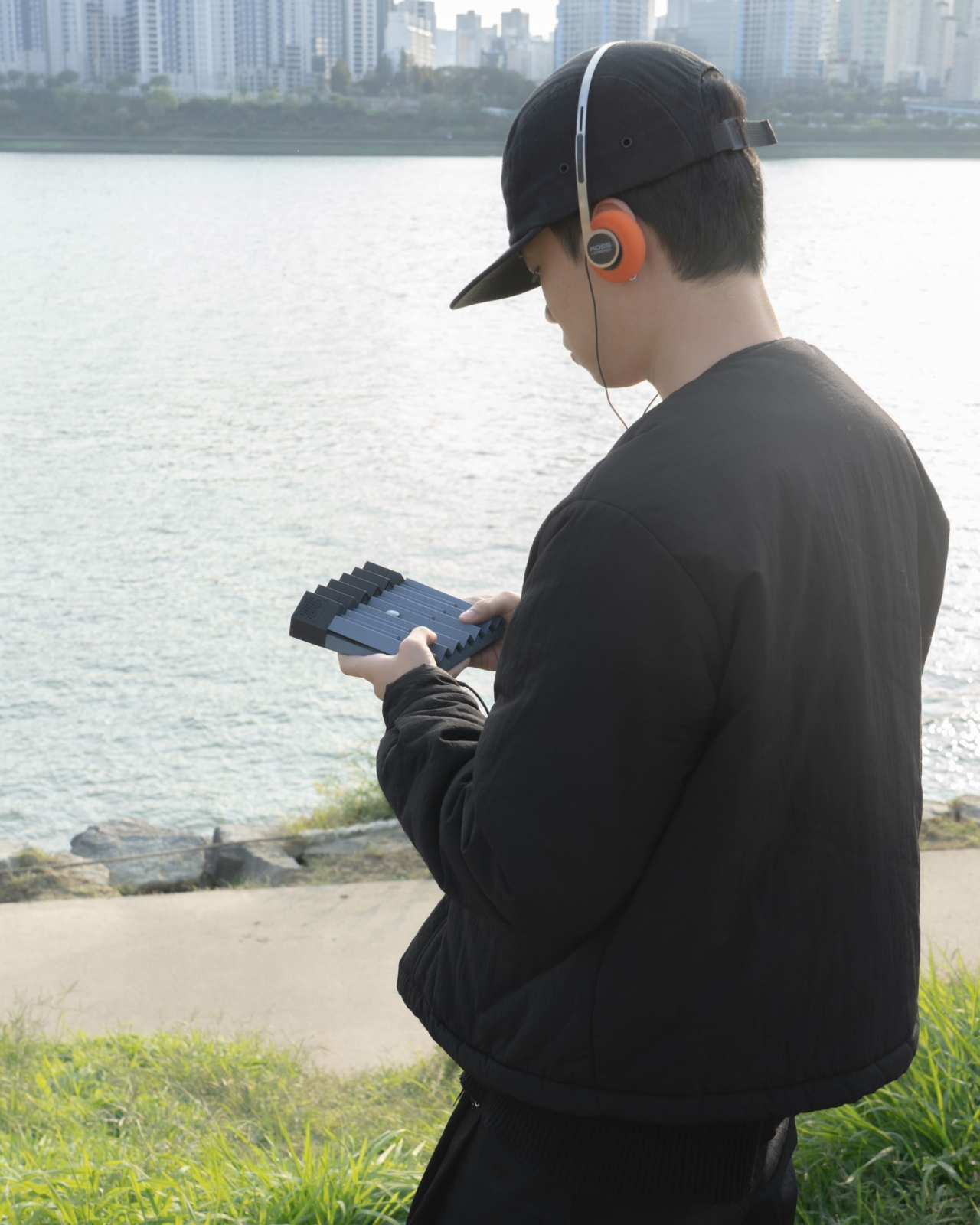

The post This AI Music Sketchbook Captures Ideas Before They Disappear first appeared on Yanko Design.
Rockstar Games accused of union busting in the UK
Rockstar Games, developer of Grand Theft Auto VI, has been accused of deliberately laying off employees who were trying to unionize, Bloomberg reports. The Independent Workers Union of Great Britain (IWGB) claims over 30 employees who were eliminated at the developer's offices in the UK and Canada were either already part of a union or attempting to organize.
"Rockstar has just carried out the most blatant and ruthless act of union busting in the history of the games industry," IWGB President Alex Marshall said in a blog post about the layoffs. "This flagrant contempt for the law and for the lives of the workers who bring in their billions is an insult to their fans and the global industry."
Besides the disruption of having to find a new job, the union notes that several employees who were let go are particularly vulnerable. "Amongst the staff dismissed were those with visas sponsored by Rockstar and those with medical conditions who will lose access to essential workplace healthcare schemes," the union says. It adds that "all of those dismissed at Rockstar UK were members of the IWGB Game Workers Union discord channel, and appear to have been targeted for this reason." In response to the IWGB's claims, Rockstar's publisher and owner Take-Two Interactive told Bloomberg that the layoffs had nothing to do with union activity and instead were "for gross misconduct, and for no other reason."
Rockstar and Take-Two have come into conflict with employees in the past over their return-to-office policy. Take-Two also laid off staff across multiple studios in 2024 and 2025, potentially motivated by the decision to push back the release of Grand Theft Auto VI to 2026. The game is expected to be a massive hit for the company and the wider industry, which is part of the reason why the IWGB believes the layoffs are motivated by something other than financials.
This article originally appeared on Engadget at https://www.engadget.com/gaming/rockstar-games-accused-of-union-busting-in-the-uk-221004334.html?src=rssBluesky experiments with dislikes and ‘social proximity’ to improve conversations
Bluesky is adding a dislike button as a way to signal the kind of posts you don't want to see in your Discover feed. The experiment is part of several new ideas Bluesky is exploring to a improve conversations on its platform.
The new experiments Bluesky is running are primarily built around the notion of "social proximity." The company says it's aiming to build a system that maps your place in a "social neighborhood" of "people you already interact with or would likely enjoy knowing." By prioritizing replies and posts from the people in your general "neighborhood," the company believes it can make conversations "feel more relevant, familiar, and less prone to misunderstandings." Following that logic, the beta test of the dislike button (which sounds private, rather than public-facing) will "help the system understand what kinds of posts you’d prefer to see less of," but could also affect reply rankings in your threads and in the threads of other people in your social neighborhood.
The social platform already offers a way to limit replies to only people who follow you, as Bluesky CTO Paul Frazee noted in a recent post, but the company doesn’t “want to make that the only option.” Bluesky is also experimenting with adjusting how the Reply button works by making you see the whole thread first when you tap the button, rather than dumping straight into a new blank post. Combined with a new model for detecting bad replies, the company thinks it’ll improve the general social climate.
Charitably, these tweaks sound like another way Bluesky is trying to give users more control over what they see on the platform, in the same way it does with things like notifications. Less charitably, you could read the "social neighborhood" concept as a way to entrench users in their "filter bubble" rather than address larger moderation issues.
Recently, Bluesky has been criticized by users for failing to remove the accounts of people who allegedly violate the company's community guidelines. Ensconced in a social neighborhood, those critics wouldn't necessarily see offensive posts, nor would a poster see their critics. That might lead to less conflict overall, but it could also impact more productive forms of disagreement in the process.
This article originally appeared on Engadget at https://www.engadget.com/social-media/bluesky-experiments-with-dislikes-and-social-proximity-to-improve-conversations-205226194.html?src=rssApple To Launch $599 MacBook With An A18 Pro Chip Inside? Here’s What We Know

The budget laptop market has long been dominated by Chromebooks and entry-level Windows machines, but Apple may be about to crash the party. Reports indicate the tech giant is preparing to launch a $599 MacBook featuring the A18 Pro chip, offering desktop-class macOS performance at a price point that directly challenges competitors. If true, this could be Apple’s biggest strategic shift in the laptop space in over a decade.
The rumored device would mark a dramatic departure from Apple’s traditional pricing strategy, which has kept MacBooks firmly in premium territory. But with Chromebooks capturing the education market and budget Windows laptops satisfying casual users, Apple has watched from the sidelines as millions of potential customers chose competitors simply because the price of entry was too high. This move could change that calculus entirely.
Designer: Apple

The laptops could sport a colorful design, helping differentiate it from the more capable Air and Pro models.
The A18 Pro chip is the same processor that powers the iPhone 16 Pro, and Apple claims it delivers performance comparable to the M1 MacBook Air. That’s a legitimately capable chip for everyday computing tasks like web browsing, document editing, video streaming, and light photo work. You’re looking at a 12.9-inch display housed in what’s described as an ultra-thin, lightweight frame, with color options including silver, blue, pink, and yellow. The base model comes with 8GB of RAM, though there’s reportedly an option to upgrade to 16GB. It runs full macOS, which means you get access to the entire Apple ecosystem and software library, something Chromebooks fundamentally cannot offer.
But here’s where things get interesting, and where Apple’s compromises become obvious. No Thunderbolt ports. Limited external display support. That base 8GB of RAM is going to struggle with anything beyond basic multitasking. This machine is clearly designed for a specific user: students writing papers, casual users checking email and browsing the web, first-time Mac buyers who want to dip their toes into the ecosystem without dropping two grand. Apple isn’t trying to replace the MacBook Air or Pro with this device. They’re creating an entirely new category within their lineup, one that prioritizes accessibility over capability.

Spring 2026 puts this launch alongside the M5 MacBook Air, which will undoubtedly carry a higher price tag and more robust specs. Apple gets to segment their market cleanly: budget buyers get the A18 Pro MacBook, mainstream users get the M5 Air, and professionals stick with the Pro and Max configurations. Analysts are predicting this could boost MacBook shipments by up to 40 percent, which would be massive for a company that’s watched competitors dominate the sub-$700 laptop space for years.
There’s a real risk here that Apple cannibalizes their own iPad sales. Why would someone buy an iPad in the same price range when they could get a full laptop with macOS instead? The value proposition shifts dramatically when you’re comparing a tablet with accessories that cost more than this MacBook to an actual laptop with a keyboard included. Apple clearly thinks the trade-off is worth it, betting that bringing more people into the Mac ecosystem will pay dividends down the line when those users eventually upgrade to pricier models.

The post Apple To Launch $599 MacBook With An A18 Pro Chip Inside? Here’s What We Know first appeared on Yanko Design.
How to cancel or pause your YouTube TV subscription
While YouTube TV is Engadget's pick for the best live TV streaming service, it isn't for everyone, especially right now. Google and Disney's ongoing carriage dispute means subscribers don't have access to channels like ABC and ESPN, and recent price hikes means paying for YouTube TV now costs a minimum of $83 a month.
Whether you've switched to another service to hold on to your favorite channels or just want to save some money, there's ample reasons to cancel or pause your subscription right now. Here's what you should know about cancelling or pausing your YouTube TV subscription.
How to cancel your subscription on mobile and web
The process for canceling your YouTube TV subscription is the same whether you're doing it inside the YouTube TV app or from a web or mobile browser, provided you're paying Google directly for access.
Open the YouTube TV website or app.
Tap or click on your profile photo.
Select Settings (represented by the gear icon).
Then, select Membership.
Select Manage.
Then select Cancel membership, and then Cancel to confirm your cancellation.
Your subscription is now cancelled and you'll be able to enjoy access to live TV until the end of your current payment period. Any shows or movies you've recorded will be saved in your account for 21 days, after which they'll be deleted. In a support article, Google says it'll also save your preferences in case you want to resubscribe and start recording content again. The company "may store limited info (such as your home zip code)" for fraud prevention purposes, as well.
If you got your YouTube TV subscription through your mobile carrier or internet provider, the process will vary, but in that case, you'll have to cancel through them rather than Google.
How to pause your subscription on mobile and web
If you'd prefer to just take a break from paying for YouTube TV, you can also pause your subscription for anywhere from four weeks to six months.
Open the YouTube TV website or app.
Tap or click on your profile photo.
Select Settings (represented by the gear icon).
Then, select Membership.
Select Manage.
Use the on-screen slider to choose how long you want to pause payments for.
Select Pause.
Once you've paused your subscription, you'll be able to access YouTube TV until the end of your current billing period, after which you'll lose access and won't be charged until the pause is over. Once your chosen amount of time has passed, your subscription will renew automatically. At any point during your pause you can resume using YouTube TV again, provided you're willing to pay. While there's no way to extend a pause, you do have the option to pause again once your billing restarts.
This article originally appeared on Engadget at https://www.engadget.com/entertainment/streaming/how-to-cancel-or-pause-your-youtube-tv-subscription-192023656.html?src=rssHeatherwick Studio Breaks Ground on Seoul’s Soundscape: Transforming Forgotten Island Into Musical Oasis

From forgotten wasteland to cultural destination, Nodeul Island on Seoul’s Han River is undergoing a remarkable transformation under the vision of renowned British architect Thomas Heatherwick. After winning a highly competitive global design contest, Heatherwick Studio officially broke ground on its ambitious “Soundscape” project in October 2025, marking a new chapter for both the studio and South Korea’s cultural landscape.
Designer: Heatherwick Studio

From Waste Storage to Wonder
Nodeul Island’s story begins in 1917 when it was first constructed by the Japanese colonial administration. For decades, this artificial island served as little more than a waste storage facility, earning it the reputation as Seoul’s “forgotten island”. Fenced off from the public and left to decay, few could have imagined its potential as a vibrant cultural hub.
That changed when the Seoul Metropolitan Government launched an international competition to reimagine the space. Following a year-long process involving exhibitions, consultations, and public voting, Heatherwick Studio’s “Soundscape” emerged victorious in May 2024.

A Design Inspired by Sound and Mountains
The winning design draws inspiration from two distinctly Seoul elements: the city’s mountainous terrain and the visual patterns created by soundwaves. This dual inspiration manifests as a landscape that literally bends and folds like sound itself, creating what Thomas Heatherwick describes as “a trail of dramatic spaces on different levels that can host musical performances and artistic interventions”.
The centerpiece of the design features floating islets held in the air, providing elevated rest points with panoramic views across the island and back to Seoul’s skyline. These structures will be connected by a 1.2-kilometer skywalk, allowing visitors to experience what Heatherwick calls “drama and harmonies in the sky”.

A Cultural Destination for the Digital Age
Soundscape addresses what Heatherwick sees as a growing problem in our “hyper-digital age” – the increasing sense of loneliness and isolation. His solution is decidedly physical: a space dedicated to bringing people together through music and nature. The island will house an impressive array of cultural facilities, including recording studios, small concert halls, a waterfront amphitheater, and a K-pop experience center .
More unique offerings include an anechoic chamber for acoustic experimentation, a music café, and even a karaoke bar, ensuring the island caters to every musical taste and experience level. Beyond entertainment, the project emphasizes ecological restoration. The design incorporates native flora and fauna, with naturalistic plantings strengthening the riverbanks. This biodiverse landscape serves as both an environmental restoration and a sensory experience.

The post Heatherwick Studio Breaks Ground on Seoul’s Soundscape: Transforming Forgotten Island Into Musical Oasis first appeared on Yanko Design.

